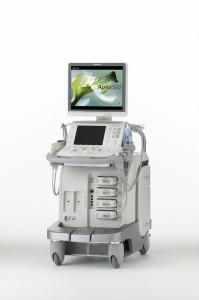Toshiba’s Aplio 500 Provides EPIC Imaging with Industry-Leading Depth and Detail –Feb 04, 2014– Tustin, USA (Techreleased) – EPIC Imaging has enhanced its ultrasound capabilities by upgrading its fleet with nine Aplio 500 ultrasound systems from Toshiba America Medical Systems, Inc. The facility recently completed a significant overhaul of its ultrasound systems after conducting a side-by-side comparison of several of the premier systems on the market. EPIC Imaging ultimately purchased Toshiba’s Aplio 500 because of its user-friendly features and ability to reliably perform high-quality examinations.

“As a high-volume facility, it was critical that our new ultrasound equipment be easy to use and deliver consistent results for fast, accurate diagnoses,” said Dr. Daniel Kocarnik, diagnostic radiologist, EPIC Imaging. “The Aplio 500’s design integrates four transducer connections, reducing the need to switch out equipment between examinations. The system’s lightweight and ergonomic layouts also allow our users to increase exam efficiency.”
EPIC Imaging is using the Aplio 500s to diagnose a variety of medical issues and is also exploring potential clinical applications of the system’s unique Fly Thru technology. Fly Thru, an industry-first technology, uses 4D ultrasound to “fly through” interiors of ducts and vessels for better exploration of lesions and masses, and to assist in planning interventional procedures. EPIC imaging is finding the system easy to use with the Aplio 500’s standard workflow tools and ergonomics, including the iStyleTM+ Productivity Suite.
“Toshiba’s ultrasound systems are designed to provide clinicians with the highest-quality images in the industry,” said Tomohiro Hasegawa, director, Ultrasound Business Unit, Toshiba. “Additionally, the Aplio 500’s customizable interface and one-touch presets allow clinicians to easily shift between protocols during exams, saving the clinicians’ time and making shorter exams for the patient.”










